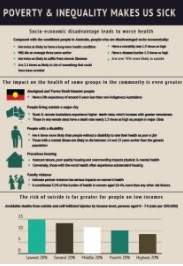States' housing step-up no substitute for federal action
New research by the ACOSS/UNSW Poverty and Inequality Partnership shows renters on low and modest incomes are in the grip of a housing pincer, especially in regional Australia, as surging rents and the Commonwealth’s neglect of social and affordable housing creates acute stress. The report notes that while some States have recently increased their investment in social housing, they simply lack the financial firepower to make up for a decade of neglect. Four state Governments (Victoria, Queensland, Tasmania and Western Australia) have announced significant self-funded public housing construction programs as a component of post-pandemic stimulus investment, providing an investment of nearly $10 billion over the next few years. While these programs will add over 23,000 badly needed new homes to the stock of public and community housing over the next four years, more than 155,000 households are registered on social housing waiting lists across the country with more than 400,000 households…
Sole parents and unemployed face poverty as nation surges ahead
The income gap between people without paid work and sole parents, and the broader community is widening, according to a new study tracking income support over two decades. Australian Income Support Since 2000: Those Left Behind, will be launched today by the ACOSS/UNSW Sydney Poverty and Inequality Partnership to mark Anti-Poverty Week. The report notes median household incomes have grown 45% since June 2000 with Age and Disability Support Pensions almost keeping pace. “People receiving unemployment and single parent income support payments have been badly cast adrift,” said Dr Cassandra Goldie, CEO of ACOSS. “Those doing it toughest have been held further behind, making it that much harder to look after their health and families, as well as participate in the workforce. “Apart from the brief period when the Coronavirus supplement was paid, the performance of the income support system during this period of robust economic growth has left whole groups of people further and further…
Last year we backed you, this year you’re on your own: COVID’s scorched economic path revealed
New research by the ACOSS/UNSW Sydney Poverty and Inequality Partnership reveals the deepest, most enduring economic damage of the COVID pandemic has been felt in lower income areas, like outer north-west and south-east Melbourne, west and south-west Sydney, northern Adelaide, far North Queensland and regions between Brisbane and the NSW border. These areas are also impacted by cuts to economic supports in 2021. The Report shows that, between September 2019 and October 2020, people needing to rely on income support, who became eligible for the Coronavirus Supplement, increased by a dramatic 70%, peaking in the 2020 First Wave of the Pandemic. The Coronavirus Supplement was a vital additional payment supporting this dramatic rise in people hit by unemployment. The Report also shows that, following the Second Wave, by September 2021, the overall number of people on these income support base payments due to unemployment is still much higher than prePandemic, by a full 27%. Yet, the vast…
Report lays bare Australia’s stark health income gap as COVID widens it further
As major inequities in the vaccine roll out emerge, ACOSS and UNSW Sydney have today released a report showing the relationship between income and health. Australian Council of Social Service CEO Dr Cassandra Goldie said: “The pandemic has exposed the stark inequities that impact our health across the country. People on the lowest incomes, and with insecure work and housing have been at greatest risk throughout the COVID crisis. Now, they are the same people who are at risk of missing out in the vaccine roll out. “Our report shows that health inequities are built into our society. Our report shows that people on low incomes have the highest levels of psychological distress, and we know that the pandemic is increasing that distress. “People on lower incomes are also at greater risk of chronic illnesses, which can also make them more at risk to the impacts of the pandemic.” Professor Evelyne de Leeuw, Director of Centre for Health Equity Training, Research & Evaluation, said: "It's…
New report shows progress made on homelessness in response to COVID-19 slipping away – tens of thousands face huge rental debts
A new report shows the gains made on reducing homelessness during the pandemic last year are slipping away. It shows less than a third of those assisted with temporary hotel accommodation during the crisis were later transitioned into longer-term affordable housing, mainly due to a shortage of social housing available. At the same time, tens of thousands of people renting across the country now owe mounting rental debts, after having their payments deferred (but not reduced) while eviction moratoriums were in place. The report - COVID-19 Rental Housing and Homelessness Impacts: an initial analysis – is part of the UNSW Sydney and Australian Council of Social Service’s Poverty and Inequality research partnership. Australian Council of Social Service CEO, Dr Cassandra Goldie, said: “During the pandemic, governments did the right thing by increasing income support payments, putting in place eviction moratoriums and providing emergency housing to prevent a sudden surge in homelessness.…
New report shows who is most impacted by inequality in Australia
A new report by ACOSS and UNSW Sydney shows that, pre-COVID, single people on JobSeeker, even those with some paid work, and single parents on JobSeeker, have been struggling on the lowest rung of the household income scale. Over half are in the lowest 10% of incomes nationally. Half of people on age pensions are in the lowest 20% of incomes nationally, though widespread home ownership among this group provides a significant degree of protection from poverty. The 10% of older people who rent their homes are in a much more financially distressed position. The report – Inequality in Australia 2020: Part 2, Who is Affected and Why – sets a base-line of data against which to assess the impact that COVID-19 is having on inequality in Australia. It reveals where different groups fit in the income and wealth scales, and the direct causes of inequality from the latest data available, 2017-18. Professor Carla Treloar, Director of the Social Policy Research Centre, UNSW Sydney, said: “Even…
New research highlights risk of COVID pandemic increasing inequality
New analysis of inequality in Australia pre-COVID-19 provides a baseline against which to measure the impacts of the pandemic on income and wealth inequality. It highlights the ameliorating effects of timely Government policy responses – including increased Jobseeker and Jobkeeper payments – but warns that the long-term effect of the pandemic on income and wealth inequality will depend on how these policies evolve. Using the latest available ABS data (2017-18), the ACOSS/UNSW Sydney Poverty and Inequality Partnership Report finds that, pre-COVID, the incomes of those in the highest 20% were 6 times higher than those in the lowest 20%, with that gap widening since 2015-16 (when the ratio was 1:5). An examination of wealth data shows that, for the first time, average household wealth exceeded $1 million in 2017-18. However, the distribution of wealth in Australia was deeply unequal, with the average wealth of the top 20% ($3,255,000) some 90 times that of the lowest 20% ($36,000). Those…
New report shows women with caring responsibilities at greater risk of poverty before COVID-19 and highlights risks of ‘snapback’
New analysis of poverty in Australia finds that, before COVID-19, households with children with a female main income earner were more than twice as likely to live in poverty as those in which the main income earner was male, highlighting the impact of caring roles on poverty in Australia. The report also finds that people who were unemployed were at greatest risk of poverty, with two-thirds of people in affected households living below the poverty line. The report’s findings confirm, once again, the inadequacy of pre-COVID payments for people who are unemployed. The findings lead the Poverty in Australia 2020: Part 2 – Who is affected? report, released today by the Australian Council of Social Service and UNSW Sydney. The report compares the impact of poverty on different people in the community, broken down by age, family type income source, and labour market and housing status. It includes estimates of poverty among people with disability and those from culturally and ethnically…
Release of new research on poverty in Australia
21 February 2020: Today the ACOSS/UNSW Poverty and Inequality Partnership released the first of our reports for 2020 - Poverty in Australia 2020: Part 1, Overview. The report paints a picture of poverty in Australia showing that over three million people, including three quarters of a million children, are living in poverty. Download the report at: http://bit.ly/PovertyOverview
ACOSS and Cohealth release health inequality infographic
Everyone should have equal access to health care in Australia. But there is a huge difference in health outcomes depending on income. This is especially true for particular groups in the community, such as people living in precarious housing, or those dealing with the impacts of family violence. ACOSS and Cohealth have partnered to produce an infographic on how poverty and inequality make us sick: Download it at http://povertyandinequality.visualise.today/wp-content/uploads/2019/10/ACOSS_Cohealth_health-inequality-infographic.pdf

